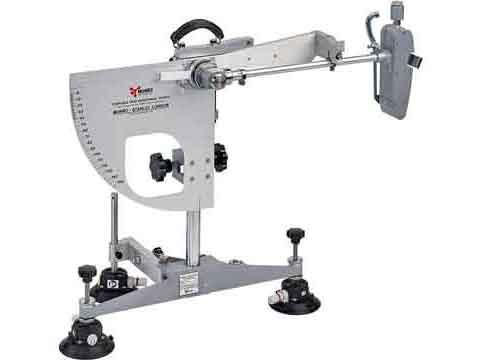Slip Testing Service for Flooring
Safety should always be a top priority, whether you are a business owner, a property manager, or a homeowner. One often overlooked aspect of safety is the slip resistance of your flooring. Slip testing services play a vital role in evaluating and enhancing the slip resistance of different flooring materials.
Understanding Slip Resistance
Slip resistance is the measure of how much grip or traction a floor surface provides. It is typically assessed in terms of the coefficient of friction, which determines the force required to initiate sliding on the floor. A higher coefficient of friction indicates better slip resistance.
Why Slip Testing is Vital
Slip and fall accidents can lead to severe injuries, liability issues, and financial losses. Slip testing helps identify areas with inadequate slip resistance and allows for corrective measures to be taken before accidents occur.
Wet Pendulum Test
The wet pendulum test measures the dynamic coefficient of friction of a floor when wet. It simulates conditions where liquid is spilled on the floor, making it one of the most practical tests for real-life situations.
Frequency of Testing
Regular slip testing is essential. The frequency may vary depending on the type of facility and the flooring material, but at a minimum, annual testing is recommended.
Benefits of Regular Slip Testing
Regular slip testing offers numerous advantages, including:
- Identifying slip-prone areas.
- Preventing accidents and injuries.
- Demonstrating commitment to safety.
- Reducing liability risks.
- Ensuring compliance with safety regulations.
Choosing the Right Slip Testing Service
Selecting a reputable slip testing service is crucial. Look for a provider with experience, certification, and a track record of providing accurate and reliable results.
The Role of Regulations
Numerous safety regulations and standards exist to ensure slip resistance in public spaces. Familiarize yourself with these regulations to ensure compliance.
How Slip Testing Ensures Compliance
Slip testing is a proactive measure to meet regulatory requirements. By regularly assessing and improving slip resistance, you demonstrate your commitment to safety and adhere to legal standards.
Common Flooring Materials
Different flooring materials exhibit varying levels of slip resistance. It's important to choose the right material for your specific needs and environment.
Factors Affecting Slip Resistance
Several factors can impact slip resistance, including the type of footwear, the presence of contaminants, and the cleaning and maintenance of the floor.
DIY vs. Professional Testing
While some basic slip tests can be conducted in-house, professional slip testing services offer more accurate and comprehensive assessments.
Interpreting Slip Resistance Values
Understanding the results of slip tests is essential. A professional slip testing service can provide valuable insights and recommendations based on the data collected.
Taking Corrective Actions
When areas of low slip resistance are identified, it's essential to take corrective actions promptly. This may involve changing flooring materials or applying anti-slip coatings.
Slip Testing Service by Pendulum tester
A Slip Testing Service employing a Pendulum Tester is a valuable solution for assessing and quantifying the slip resistance of various surfaces. This testing method is essential in ensuring the safety of walking and working environments, as it helps prevent slip and fall accidents. Here's an explanation of how such a service works:
- Introduction to Slip Testing: Slip resistance testing is crucial for identifying potential hazards on floors, walkways, and other surfaces. It aims to measure the frictional properties of a surface to determine its slipperiness under different conditions.
- Pendulum Tester Overview: The Pendulum Tester is a widely used instrument for measuring slip resistance. It simulates the dynamic forces exerted on a person's foot while walking. The tester consists of a pendulum arm with a rubber slider attached to the bottom.
- Testing Procedure:
- Sample Preparation: The surface to be tested is cleaned and dried to eliminate any contaminants that may affect the test results.
- Setting Parameters: The Pendulum Tester is adjusted to the required test conditions, such as the angle of the pendulum arm and the drop height.
- Testing: The tester is released, and the rubber slider impacts the surface under investigation. The pendulum arm's movement is then recorded.
- Data Analysis:
- Coefficient of Friction (COF): The test generates a coefficient of friction value, which indicates the surface's slip resistance. A higher COF suggests better slip resistance.
- Classification: Surfaces are often classified based on COF values, with specific ranges corresponding to different slip resistance categories.
- Reporting:
- Detailed Results: The Slip Testing Service provides a comprehensive report that includes COF values, classifications, and any recommendations for improving slip resistance if necessary.
- Compliance Assessment: The results can also be compared against relevant safety standards and regulations to determine compliance.
- Benefits of the Service:
- Safety Assurance: Ensuring the safety of pedestrians and workers by identifying and addressing slip hazards.
- Risk Mitigation: Reducing the risk of slip and fall accidents, which can lead to injuries and liability issues.
- Compliance: Demonstrating compliance with safety standards and regulations.
- Improved Surfaces: Providing recommendations for enhancing slip resistance when needed.
Share
Recent posts
-
Why is the Pendulum Tester the Preferred Method for Slip Testing?
Posted 9th April, 2024 -
How to Prevent Slippery Floors
Posted 9th April, 2024 -
Slip Risk Assessment in Laboratories
Posted 9th April, 2024 -
Benefits of Slip Risk Assessment Service
Posted 9th April, 2024 -
Slip and Fall Accident Report Guide
Posted 22nd February, 2024 -
What is pendulum slip testing and how does it assess slip resistance?
Posted 28th January, 2024

